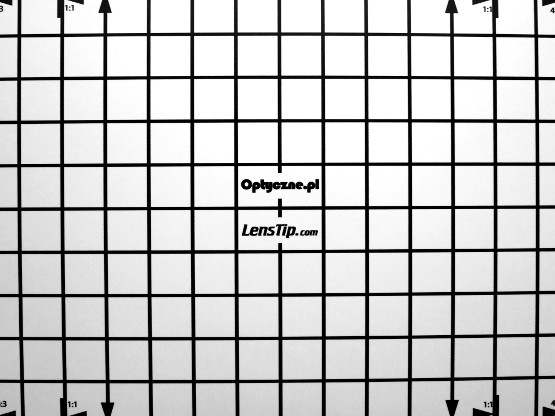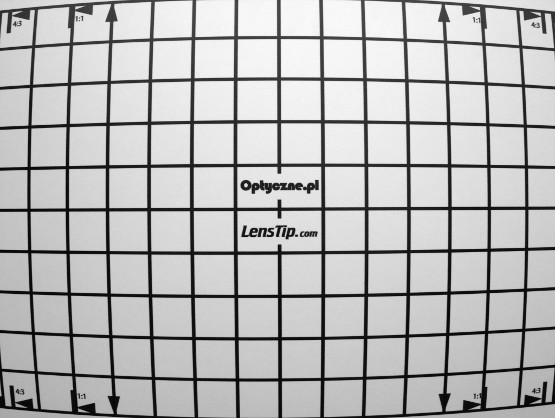Olympus M.Zuiko Digital 12 mm f/2.0 ED
6. Distortion
Please Support UsIf you enjoy our reviews and articles, and you want us to continue our work please, support our website by donating through PayPal. The funds are going to be used for paying our editorial team, renting servers, and equipping our testing studio; only that way we will be able to continue providing you interesting content for free. |
- - - - - - - - - - - - - - - - - - - - - - - - - - - - - - - - - - - - - - - - - - - - - - - -
It’s worth mentioning that the Micro 4/3 lenses are rarely designed to correct the distortion. The designers assumed that a camera’s software can do it instead. The Olympus M.Zuiko Digital 12 mm f/2.0 ED is a perfect example of such a thinking. When you use JPEG files you can notice slight barrel distortion which level we measured as –1.17%. It is not a bothersome value. The RAW files, developed by an independent program like the dcraw, are quite another story. Here the distortion reaches a huge level of - 5.97% which proves that in the case of this lens the distortion correction issue has been totally neglected.
It’s also worth mentioning here the field of view issue. We measured it for JPEG files using the method of panoramic sequence and the sky photo method - taking angular distance measurements between stars of the celestial sphere. Both methods produced the same result of 73.7 degrees on the longer side (with the margin of error not exceeding 0.2 of a degree) so exactly as much as we expect from a 12 mm lens on a 4/3 sensor. You should remember that the field of view in RAW files will be by several degrees wider.
| Olympus E-PL1, JPEG | |||

|
|||
| Olympus E-PL1, RAW | |||

|
|||






